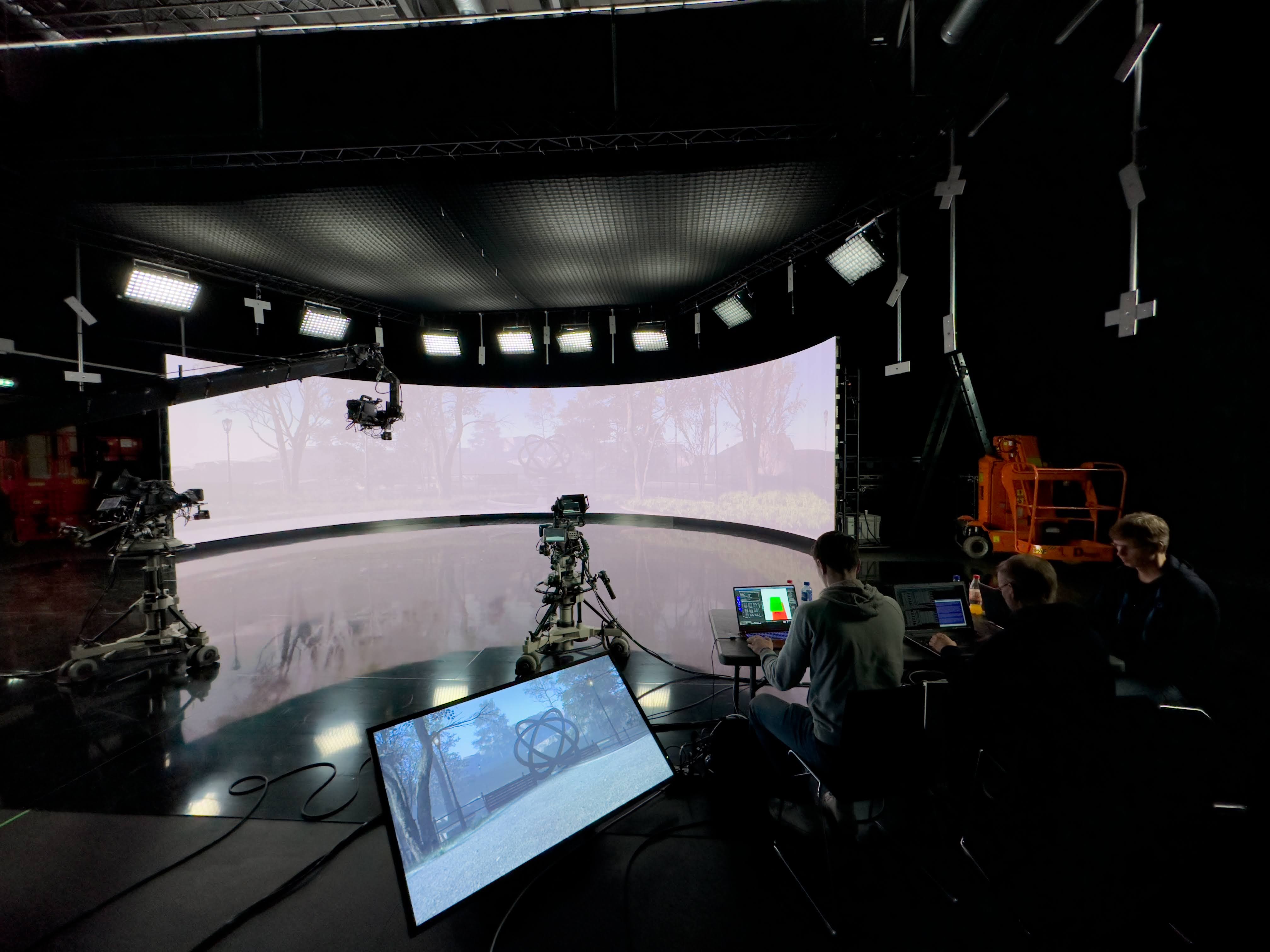The Future, Now: Virtual Production is Media Production
As with any disruptive technology, there are bound to be winners and losers in the scramble to adopt

It’s not novel information that the world of media production is evolving faster than ever. Thanks to the rapid development and adoption of exciting new technologies, like virtual production, we’re able to deliver immersive experiences that captivate and delight audiences like never before.
Such mind-bending innovation often begs the question, “where do we go from here?” To answer that, we first must come to a common understanding of how we talk about where we are now and what that means in specific terms. Even the term itself, “virtual production”, can have many different definitions and interpretations - it can be hard to keep up.
For the purposes of this article, let’s define virtual production as the tools, methods, and services used to create immersive experiences that combine real-time virtual content with live video. Under this umbrella, there are several disciplines that can be organized into two categories:
- Real talent/objects placed into a virtual world:
Virtual studios
In-Camera Visual Effects (ICVFX)
Extended Reality (XR) using LED volumes - Virtual talent/objects placed into video of the real world:
Augmented Reality (AR)
Modern data-driven on-air/motion graphics
Understanding these terms is important because they represent the different ways virtual production is transforming the media and entertainment industry.
State of Virtual Production
Virtual production has been on the horizon for more than 20 years (and arguably longer depending on how you define it). However, it was the pandemic coinciding with steep changes in availability and power of real time graphics technology that proved the concept and accelerated its adoption.
For broadcasters, virtual production provided a way to add production value to live television, such as crowds for sporting events and virtual environments for hosts and talent, that was not physically possible due to the pandemic. It also enabled remote production in new ways, by allowing “teleportation” of talent using virtual production techniques.
(Read also: The Reality of Virtual Production)
The professional video industry's #1 source for news, trends and product and tech information. Sign up below.
This also translated well into feature film and drama production. Leveraging the availability of high quality LED panels, virtual production made it possible to create immersive environments that talent could see and interact with instead of standing on an entirely green or blue screen-laden stage, void of any features.
The photorealistic capabilities of the technology were ultimately what took it mainstream. When people saw how impactful and effective virtual production could be (think of the buzz surrounding "The Mandalorian"), it became hard to go back to the "old way" of doing things. As a result, virtual production saw a meteoric rise and is quickly becoming the standard way of creating content.
Virtual Production Everywhere
When we talk about ways in which virtual production is changing the media landscape, it’s more than just the additional production valu— the “wow moments” for the viewer—that is driving the adoption:
1. Convergence of Media Production
The differences between live events, broadcast, film, T.V., video games, etc., are becoming less important than the commonalities. With real time graphics engines that are capable of photorealistic results driving everything, storytelling comes down to virtual assets and experience ownership.
Eventually all video-based content will have the visual impact of high-end feature films. This will become even more commonplace as all businesses quickly adopt the tools and methods of media production. Communication tools within healthcare, construction, engineering, consumer products, etc. are now combining the connected and scalable nature of online content with the immersive and social experience of video games.
2. Live, Immersive and Interactive
Virtual production is becoming more all-encompassing for the viewer, and for good reason. The high visual fidelity of virtual productions provides more bandwidth for the transmission of information and greater emotional impact. Compare the mixed reality (MR) ad that razor company, Gillette, broadcast live during a 2022 NFL game with a standard banner ad on a website - it’s plain to see which immediately grabs and holds attention and leaves a lasting impression on viewers.
Beyond being more attention-grabbing, virtual production enables personalization/segmentation for ads and content. For instance, you could easily have the same "baseline" coffee commercial, but the cup changes from a tall latte to a cup of black coffee depending on the viewer. Product placement in TV shows and live events is also made easier with the ability to add virtualized products, such as a particular brand of car, pizza box, soda, etc.
3. Virtual Assets, Experiences and Ownership
As the term implies, virtual production allows for the creation of virtual assets, experiences and ownership. As nearly all of our media consumption has moved to a digital realm, it is becoming paramount to come up with better ways of protecting and leveraging intellectual property. Virtual production is the perfect vehicle to provide controlled segmented and individual access to specific IP assets, down to individual characters, locations, scenes, etc, based on the viewers choice and purchases.
What this means is that you can choose when and what part of a performance or event you want to lock down for an experience and individual user. For example, Nickelodeon’s NFL Slime Time uses key game moments like touchdowns to create an experience with the addition of AR slime cannons and more. One can easily imagine versions of this where viewers could purchase completely unique versions of this experience just for them and their friends to experience.
4. Commodity Photorealism and High-Performance Computing
Easy access to high-performance computing via cloud and GPU, with photorealistic rendering and processing from modern game engines, allows for the creation of new types of media experiences and novel production methods.
Commodity photorealism and high-performance computing are making virtual production accessible to everyone and making it look amazing.
5. Software Eating the World
Another significant trend that is changing the landscape of media production is the shift from proprietary hardware to out-of-the-box software solutions. In the past, media professionals relied on expensive, specialized hardware to run their workflows. However, with the increasing power and accessibility of high-performance computing, software-based solutions are becoming more viable and efficient.
What Does This all Mean for the Future?
Taken together, these trends point towards a future where virtual production is the default method of media production.
As with any disruptive technology, there are bound to be winners and losers in the scramble to adopt. However, the trend towards commodification of virtual production and the increasing accessibility of software-based solutions suggests that the benefits of this technology will be democratized across industries, rather than concentrated in the hands of a few dominant M&E players. The result being that any business can create immersive and interactive experiences that drive engagement and brand loyalty.
With virtual production, media professionals have a powerful new set of tools at their disposal that enable them to tell stories and create experiences in new and innovative ways, where the possibilities are endless.
Marcus B. Brodersen is CEO at Pixotope

